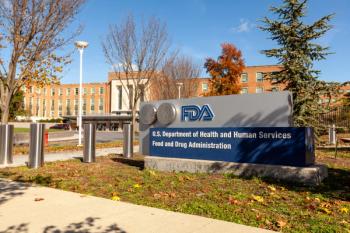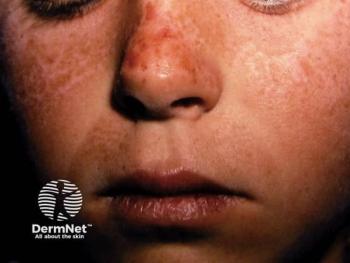
Morgellons Disease: A Mysterious Disease
MD is a type of delusional parasitosis where patients report that their skin contains parasites, toxins, fibers, or other foreign material.
Introduction
Morgellons disease (MD) was first described in 1674 in a letter by Sir Thomas Browne, describing a pediatric skin disease characterized by “harsh hairs on…backs.” Later case studies described “parasitophobias,” “delusions of parasitosis,” or “dermatological hypochondriasis,” and some physicians reported an association of delusional parasitosis with spirochetal infection. The first case of MD as currently defined was described by biologist Mary Leitao in 2001, who noticed nonhealing lesions on her son which were found to have blue and red filaments embedded1. However, MD is a poorly understood condition, with no consensus on its classification as a medical or psychiatric condition, pathophysiology, or treatment2.
Clinical Features
MD is a type of delusional parasitosis where patients report that their skin contains parasites, toxins, fibers, or other foreign material3. They may also experience a sensation of crawling, biting, or stinging4. Patients often present with nonhealing lesions such as excoriations, which are self-inflicted as patients attempt to remove whatever is in their skin3. Lesions are usually not found in hard-to-reach areas, like the mid-back, and some patients will bring a collection of specimens that they have removed from their skin (“matchbox sign”) to their physician. MD most commonly affects middle-aged, Caucasian females5. Younger patients tend to be of lower socioeconomic status and often have a history of substance abuse. It may also manifest as a shared delusional disorder with close contacts, particularly family members, accepting the same delusions6.
There is no standard clinical classification scheme for MD, though one has been proposed:
- Early localized: lesions present for less than 3 months, localized to one area of the body (head, trunk, extremities)
- Early disseminated: less than 3 months, more than one area
- Late localized: more than 6 months, one area
- Late disseminated: more than 6 months, more than one area1.
Pathophysiology
In 2012, the Centers for Disease Control (CDC) conducted the first and most comprehensive study of patients with MD. Researchers did not find a pattern of epidemiological or clinical features consistent with an infectious etiology. Analysis of sample material found that the most common components were protein and cellulose, consistent with skin and textile fibers. A correlation was also seen with psychiatric comorbidity, as well as psychoactive drug use. Many later studies confirmed these findings, supporting a psychiatric cause2. MD may be considered a group conversion disorder, or mass psychogenic illness, as the internet allows information/misinformation to spread as patients look for an explanation for their symptoms3. However, an article by Middelveen et al. argues against a delusional etiology for MD, as many studies included cases that did not meet DSM-V criteria for delusional disorder (diagnosis could be better explained by another medical/mental disorder) and a lack of fiber analysis and Lyme serologic testing. Some histologic studies of filaments have found that they are not textile fibers but biofilaments made of keratin and collagen, produced by activated keratinocytes and fibroblasts, or melanin. They also argue that electron microscopy has shown that the fibers were too deeply embedded to be self-implanted1.
Some studies state that MD is a cutaneous manifestation of spirochetal infections, particularly Lyme disease (LD), based on culture, histopathological, and molecular evidence2. A study with subjects with confirmed presence of fibers embedded in or projecting from skin found that most patients had LD as well. Several other studies have also found Borrelia spirochetes in skin specimens from MD patients1. However, the CDC study did not identify any borrelial etiology. While cultures were not collected from all subjects, the sample size was large and such a positive association between LD and MD, if it existed, should have been detected2. Another argument against a spirochetal etiology is that the studies that found a correlation were conducted by the same study group; independent researchers have yet to replicate those results2.
A study reviewing functional and structural imaging studies found that MD may have an organic etiology, as patients were found to have dysfunction in the fronto-striato-thalamo-parietal network (leading to false perceptions of pruritis and infestation, impaired judgment, inability to interpret false sensations) and increased activation of structures involved in itch processing. In secondary MD, patients were found to have ischemic changes in areas that control visuo-tactile perception4.
Treatment
There is a lack of data from randomized control trials (RCTs) on the treatment of MD, with mostly case studies for reference. Overall, it is believed that MD is most likely a psychosomatic condition and, consequently, antipsychotic medications are helpful. However, other psychiatric or medical comorbidities should be identified and treated before starting pharmacotherapy. Another challenging part of treatment is that patients may be resistant to treatment if they do not think that their condition is psychiatric in nature; many patients with MD also have poor insight into their illness2,5. Before staring treatment, it is important to develop a strong patient-physician relationship, acknowledge the patient’s distress, emphasize the ability of antipsychotics to relieve burdensome symptoms, and avoid confrontational and stigmatizing language2,5. This can increase trust, encourage patients to try medication, and promote medication adherence5. In general, it is important to collect a full history, including risk factors for substance use and infection, and assess the patient’s mental health, including psychosocial stressors and coping strategies3. Referral to a psychiatrist is recommended after explaining why a psychiatrist is most appropriate for the management of their condition, framing it in terms of relieving symptoms rather than doubting their story5,3. Frequent follow-up is also important to monitor adverse effects of and adherence to treatment, as well as to continue to build trust in the patient-physician relationship2.
First-Generation Antipsychotics
Pimozide was historically used due to success in a small RCT and several case studies, leading to significant improvement to complete resolution of lesions. However, it is no longer widely used due to its adverse effects, for example depression, extrapyramidal effects, QT prolongation, and drug-drug interactions. On the other hand, it can be used for patients with MD who are reluctant to start antipsychotic medications, since pimozide is no longer indicted for psychiatric conditions, and it can be used at low doses that limit the side effects5.
Second-Generation Antipsychotics (SGAs)
Pimozide has been replaced by SGAs, such as risperidone, amisulpride, olanzapine, aripiprazole, and quetiapine, due to their improved safety profiles. For MD, much lower doses of SGAs are used than those used to treat other psychiatric conditions (0.5-2.0 mg/day). A review found that use of risperidone and olanzapine (most often prescribed for MD) led to partial or full remission in a majority of patients5.
Adjunctive Psychotropic Medications
While antipsychotics are the mainstay of treatment, other psychotropic medications may be helpful as adjunct therapies, especially for patients with comorbid psychiatric conditions. For example, patients with depression and MD may respond to antidepressants alone, without the need for antipsychotics5.
Local Therapies
Adding local topical therapies may be helpful in managing MD lesions, particularly in patients who believe their condition is purely dermatologic and may be upset if their cutaneous manifestations are overlooked. Therapies that can be considered include antiseptic emollients, emollient spray, ketoconazole shampoo, and topical doxepin5. Other adjunct therapies that may be useful include corticosteroids and phototherapy7.
Antibiotics
Given the possible infectious etiology of MD, there is some anecdotal evidence of the efficacy of antibiotics in MD, though no RCTs have been conducted. Antibiotics may be most useful in patients with confirmed LD and MD; early treatment is best1.
Conclusions
MD is truly a mysterious disease with unclear etiology, ranging from psychiatric to infectious. Patients present with complaints of parasites or fibers within their skin, leading to self-inflicted and nonhealing lesions. Treatment of MD starts with collecting a thorough medical and psychiatric history and building a strong patient-physician relationship, as patients may have poor insight into their condition, have other medical or psychiatric comorbidities, and be reluctant to view their condition as psychiatric. Treatment must be based on etiology, with antipsychotics shown to be effective in relieving symptoms and achieving remission. Future studies need to conclusively identify the pathophysiology of MD and RCTs need to be conducted to identify the best treatment to help patients manage this distressing disease.
References
- Middelveen MJ, Fesler MC, Stricker RB. History of Morgellons disease: From delusion to definition. Clin Cosmet Investig Dermatol. 2018;11:71-90. doi: 10.2147/CCID.S152343
- Beuerlein KG. Balogh EA, Feldman SR. Morgellons disease etiology and therapeutic approach: A systematic review. Dermatol Online J. 2021;25(8):1-14. doi: 10.5070/D327854682
- Nunziato CA, Egeland BM, Gurman A, Henry SL. Morgellons disease: The spread of a mass psychogenic illness via the Internet and its implications in hand surgery. Hand. 2021;16(6):NP5-NP9. doi: 10.1177/1558944720976648
- Chan S, Xiao A, Patel S, Nakamura M, Koo J. Is Morgellons an organics disease? Structural and functional abnormalities implicated in the pathophysiology of delusional infestation. Dermatol Online J. 2020;26(11):1-19. doi: 10.5070/D32611049673
- Balogh EA, Beuerlein KG, Feldman SR. Choosing the appropriate pharmacotherapy for Morgellons disease: An expert perspective. Expert Opin Pharmacother. 2022;23(5):527-530. doi: 10.1080/14656566.2022.2029407
- Bailey CH, Andersen LK, Lowe GC, Pittelkow MR, Bostwick JM, Davis MD. A population-based study of the incidence of delusional infestation in Olmsted County, Minnesota, 1976-2010. Br J Dermatol. 2014;170(5):1130-5. doi: 10.1111/bjd.12848
- Aung-Din D, Sahni DR, Jorizzo JL, et al. Morgellons disease: Insights into treatment. Dermatol Online J. 2018;24(11):1-4. doi: 10.5070/D32411041998
Newsletter
Like what you’re reading? Subscribe to Dermatology Times for weekly updates on therapies, innovations, and real-world practice tips.

















